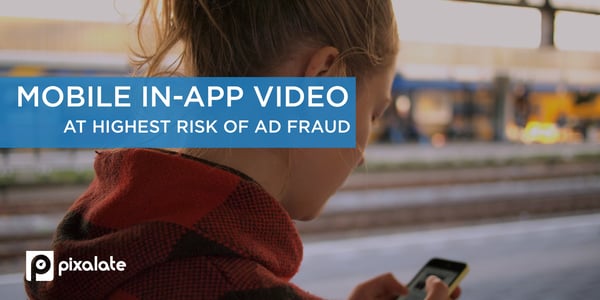
This week's review of ad fraud and quality in the digital advertising space.

Video advertising is primed to power significant growth for U.S. programmatic ad spend, wrote eMarketer in its latest ad spending forecast — and mobile is the driving force. However, ad fraud hits mobile in-app video the hardest. Pixalate's blog post shows how mobile app video ad fraud rates are consistently above 20%.

Digital advertising measurement has transitioned to a ‘Begin to Render’ basis, meaning an ad’s content must begin to render in order to be considered an impression. However, sometimes, an ad is served before the ad content renders. From a measurement perspective, such impressions are in a state of limbo.
New measurement guidelines call these "Tracked Ads" — and it's something you'll need to know about. Learn more.

"A group of small advertisers is suing Facebook and claims the social network knew about measurement miscalculations for a year before they were reported," reported Business Insider. "The group ... added a complaint Tuesday claiming that internal records suggest 'Facebook's action rises to the level of fraud,'" noted Business Insider. Facebook has filed a motion to dismiss the claims of fraud, per the article.

This Q&A between eMarketer and John Egan, MoPub's head of demand, EMEA, details what brands are looking for in the world of programmatic advertising in mobile apps. "There are many vendors who still aren’t integrated into the in-app environment," said Egan. "Many of them are also still trying to figure out the nuances of the in-app space and the different operating systems. There are still a lot of obstacles for brand marketers looking to meet that checklist of requirements."

Per AdExchanger, FreeWheel this week released an updated ad exchange. "The new exchange is designed to let marketers more easily buy over-the-top (OTT), set-top box video on demand and digital video inventory from any of FreeWheel’s opted-in publishers," reported AdExchanger.
Sign up for our blog to stay updated with new stats, trends, and analysis of digital ad fraud.
*By entering your email address and clicking Subscribe, you are agreeing to our Terms of Use and Privacy Policy.
These Stories on Weekly Recaps
*By entering your email address and clicking Subscribe, you are agreeing to our Terms of Use and Privacy Policy.

Disclaimer: The content of this page reflects Pixalate’s opinions with respect to the factors that Pixalate believes can be useful to the digital media industry. Any proprietary data shared is grounded in Pixalate’s proprietary technology and analytics, which Pixalate is continuously evaluating and updating. Any references to outside sources should not be construed as endorsements. Pixalate’s opinions are just that - opinion, not facts or guarantees.
Per the MRC, “'Fraud' is not intended to represent fraud as defined in various laws, statutes and ordinances or as conventionally used in U.S. Court or other legal proceedings, but rather a custom definition strictly for advertising measurement purposes. Also per the MRC, “‘Invalid Traffic’ is defined generally as traffic that does not meet certain ad serving quality or completeness criteria, or otherwise does not represent legitimate ad traffic that should be included in measurement counts. Among the reasons why ad traffic may be deemed invalid is it is a result of non-human traffic (spiders, bots, etc.), or activity designed to produce fraudulent traffic.”

